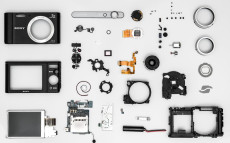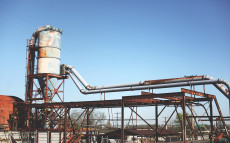- pathfindersAI
- Job Profile
Photographic Process Workers and Processing Machine Operators
Summary
Photographic Process Workers and Processing Machine Operators: A Comprehensive Career Overview
What They Do
Photographic Process Workers and Processing Machine Operators play a crucial role in the production and refinement of photographic images. Their work merges artistic sensibility with technical proficiency, resulting in high-quality visual outputs that are essential for numerous industries including media, healthcare, and scientific research. These professionals are responsible for processing photographic film, creating prints from digital images, and operating sophisticated photographic processing machinery. They also engage in the fine-tuning of images to meet client or institutional standards, ensuring that every detail is meticulously accounted for.
Job Responsibilities
The responsibilities of Photographic Process Workers and Processing Machine Operators are diverse and intricate. Primarily, they manage the processing of film in darkrooms or utilizing digital software. This involves developing negatives, printing photographs, and ensuring the correct exposure and color balance. These professionals often work with various types of machines, such as photo printers, film processers, and enlargement equipment. Maintenance of this machinery is also part of their duties, requiring them to troubleshoot and perform routine checks. Furthermore, they are tasked with enhancing digital images using specialized software to adjust brightness, contrast, and other parameters. Customer service skills are essential, as they frequently liaise with clients to understand their expectations and achieve the desired photographic results.
Essential Skills
Becoming a successful Photographic Process Worker or Processing Machine Operator requires a blend of technical and interpersonal skills. A keen eye for detail is indispensable, as precision is crucial for producing high-quality images. Technical skills in operating and maintaining photographic equipment are equally important. Proficiency with photographic editing software such as Adobe Photoshop or Lightroom adds significant value to a candidate's skill set. Additionally, strong communication skills are essential for understanding and fulfilling client requirements. Problem-solving abilities are also necessary to address any challenges that arise during the photographic processing stages.
Educational Pathways
The journey to becoming a Photographic Process Worker or Processing Machine Operator can follow multiple educational pathways. While a high school diploma or GED is the minimum requirement, many employers prefer candidates with additional training or certifications in photography or related fields. Postsecondary programs, such as an associate degree in photography, offer comprehensive education in both film and digital photographic techniques, along with hands-on experience in processing equipment and software. For those looking to further validate their skills, undertaking professional certifications from recognized institutions can be highly advantageous. Internships and hands-on training modules are often integral components of these educational pathways, providing invaluable real-world experience.
Career Prospects
The career prospects for Photographic Process Workers and Processing Machine Operators continue to evolve with advancements in technology and shifts in industry demand. The rise of digital photography has transformed many facets of the profession, increasing the need for skilled digital imaging technicians. Job opportunities can be found in a variety of settings, including photographic labs, media companies, and healthcare institutions that rely on precise visuals for patient care. Although the Bureau of Labor Statistics projects a slower than average growth rate for this occupation, niches within digital archiving, fine art reproduction, and specialized scientific imaging offer robust avenues for employment. Moreover, those with entrepreneurial ambitions can carve out successful freelance careers, catering to an array of clients with specific photographic needs.
Conclusion
The role of a Photographic Process Worker and Processing Machine Operator is an intriguing amalgamation of artistry and technical acumen. They are the unsung heroes behind the scenes, ensuring that each image is developed to perfection and meets the highest standards. As technology continues to advance, the demand for these skilled professionals evolves, offering new and exciting opportunities within the digital landscape. For those with a passion for photography and a knack for precision, this career offers a fulfilling blend of creativity and technical expertise, making it a compelling choice for aspiring professionals in the field.
Video
Compensation
| State | Median Salary | Median Hourly | Positions |
|---|---|---|---|
| AL | 27,200 | 13.08 | 70 |
| CA | 38,980 | 18.74 | 710 |
| FL | 34,160 | 16.42 | 310 |
| GA | 30,820 | 14.82 | 130 |
| ID | 29,120 | 14.00 | 60 |
| IL | 50,400 | 24.23 | 40 |
| IN | 37,870 | 18.21 | 240 |
| IA | 30,400 | 14.61 | 160 |
| KY | 33,990 | 16.34 | 50 |
| LA | 31,890 | 15.33 | 40 |
| MD | * | * | 180 |
| MA | * | * | 400 |
| MI | 37,170 | 17.87 | 110 |
| MS | 64,250 | 30.89 | 40 |
| MO | 35,360 | 17.00 | 120 |
| NJ | 44,190 | 21.25 | 90 |
| NY | 72,210 | 34.72 | 290 |
| OH | 48,480 | 23.31 | 50 |
| OR | 39,700 | 19.09 | 50 |
| PA | 36,450 | 17.52 | 440 |
| SC | 18,940 | 9.11 | 60 |
| TN | 33,190 | 15.96 | 130 |
| TX | 36,920 | 17.75 | 80 |
| UT | 34,140 | 16.42 | 50 |
| VA | 37,760 | 18.15 | 120 |
| WA | 77,910 | 37.46 | 120 |
| WI | 34,590 | 16.63 | 90 |
Similar Occupations
In this area you will find other occupations that are close to the one you were viewing in tasks, knowledge and work environment. If the primary job profile you are viewing isn't quite to your liking, take a look around and see what else is available.
Basic and Premium Accounts have more alternative occupations available than the Free account.

Camera and Photographic Equipment Repairers - 49-9061.00
Camera and Photographic Equipment Repairers specialize in diagnosing and fixing malfunctions in cameras and other photography-related devices. They meticulously inspect and repair a variety of equipment, ensuring optimal performance and addressing any technical issues that arise.
-
$46,850/yr
Median Pay -
2,540
Number of Jobs

Etchers and Engravers - 51-9194.00
Etchers and engravers use specialized tools and techniques to create detailed designs and images on various surfaces such as metal, wood, glass, and plastic. They meticulously carve, etch, or inscribe patterns and texts, often for artistic, industrial, or commercial purposes.
-
$40,040/yr
Median Pay -
8,140
Number of Jobs